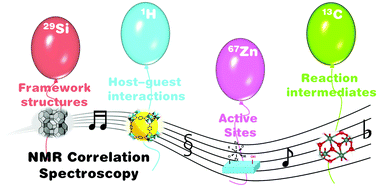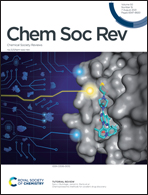Solid-state NMR studies of internuclear correlations for characterizing catalytic materials
Abstract
Understanding the nature of heterogeneous catalysts is critical for the rational design of highly active catalysts, which necessitates in-depth characterization of the structure and properties of catalysts as well as reaction mechanisms. Solid-state NMR correlation spectroscopy is becoming increasingly recognized as a powerful tool in the study of catalysts and catalytic reactions because of its capability to provide atomic-level insights into the structure, interaction and dynamics of molecules by establishing connectivity and proximity between the same or distinct nuclei. This tutorial review focuses on the fundamentals and state-of-the-art applications of solid-state NMR correlation techniques to structural characterization of catalytic materials including zeolites, metal oxides, organometallic complexes and MOFs as well as relevant studies regarding synthesis, synergistic catalysis, host–guest interactions and reaction mechanisms. Various correlation NMR methods that have been employed to address the challenging issues in heterogeneous catalysis are highlighted. This review concludes with outlooks on the promising applications and potential developments of solid-state NMR correlation spectroscopy in catalytic materials.



 Please wait while we load your content...
Please wait while we load your content...